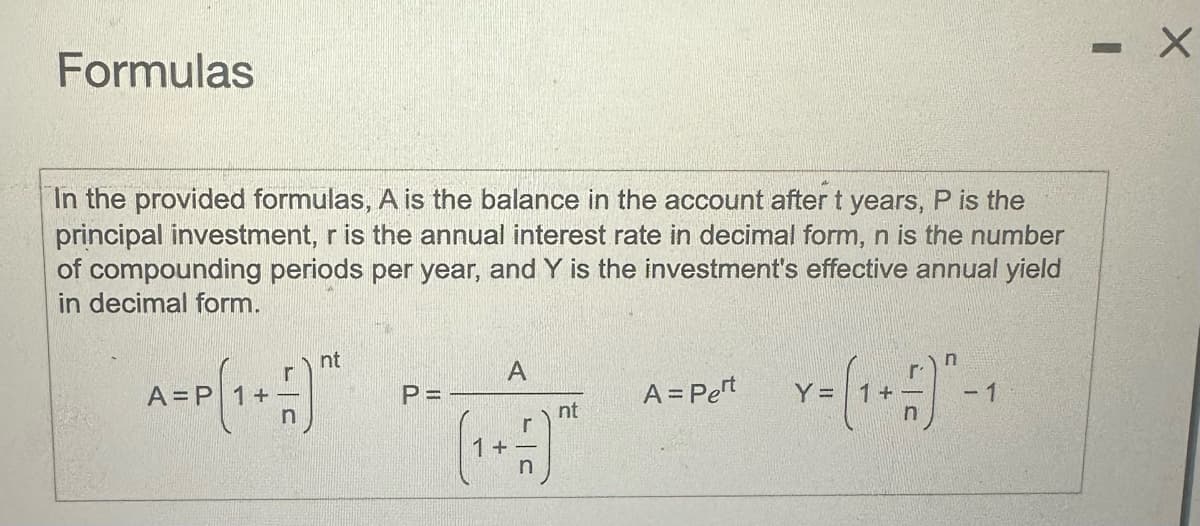Parents wish to have $140,000 available for a child's education. If the child is now 2 years old, how much money must be set aside at 8% compounded semiannually to meet their financial goal when the child is 18? Click the icon to view some finance formulas. The amount that should be set aside is $ (Round up to the nearest dollar.) Formulas In the provided formulas, A is the balance in the account after t years, P is the principal investment, r is the annual interest rate in decimal form, n is the number of compounding periods per year, and Y is the investment's effective annual yield in decimal form. nt A A = P + P = A = Pert nt Y = (1+ ±)-1 - ×
Parents wish to have $140,000 available for a child's education. If the child is now 2 years old, how much money must be set aside at 8% compounded semiannually to meet their financial goal when the child is 18? Click the icon to view some finance formulas. The amount that should be set aside is $ (Round up to the nearest dollar.) Formulas In the provided formulas, A is the balance in the account after t years, P is the principal investment, r is the annual interest rate in decimal form, n is the number of compounding periods per year, and Y is the investment's effective annual yield in decimal form. nt A A = P + P = A = Pert nt Y = (1+ ±)-1 - ×
Chapter9: Sequences, Probability And Counting Theory
Section9.4: Series And Their Notations
Problem 56SE: To get the best loan rates available, the Riches want to save enough money to place 20% down on a...
Related questions
Question
100%
The amount that should be set aside is $
enter your response here.
(Round up to the nearest dollar.)

Transcribed Image Text:Parents wish to have $140,000 available for a child's education. If the child is now 2 years old, how much money must
be set aside at 8% compounded semiannually to meet their financial goal when the child is 18?
Click the icon to view some finance formulas.
The amount that should be set aside is $
(Round up to the nearest dollar.)

Transcribed Image Text:Formulas
In the provided formulas, A is the balance in the account after t years, P is the
principal investment, r is the annual interest rate in decimal form, n is the number
of compounding periods per year, and Y is the investment's effective annual yield
in decimal form.
nt
A
A = P
+
P =
A = Pert
nt
Y = (1+ ±)-1
-
×
Expert Solution
This question has been solved!
Explore an expertly crafted, step-by-step solution for a thorough understanding of key concepts.
Step by step
Solved in 2 steps

Recommended textbooks for you

